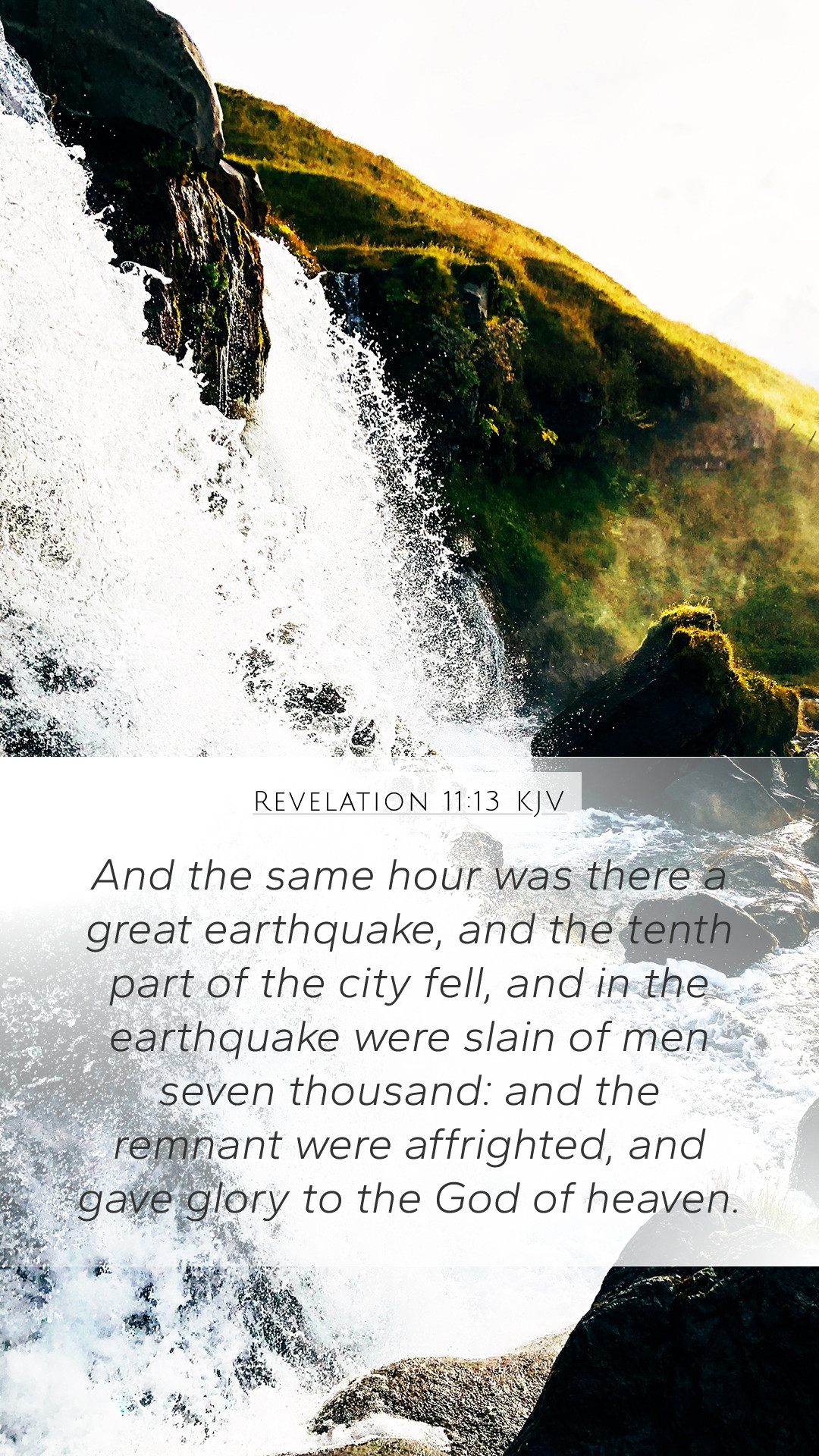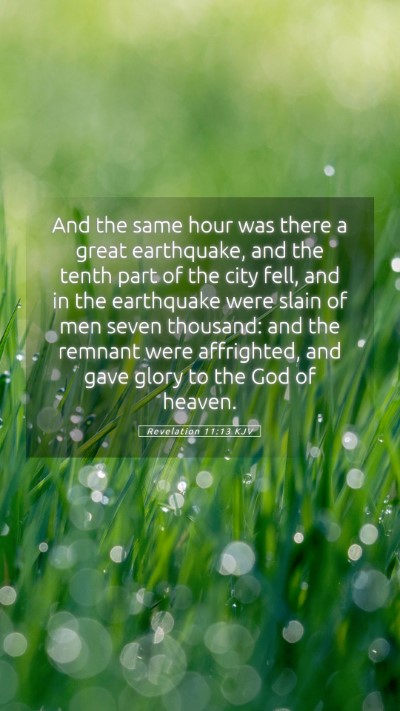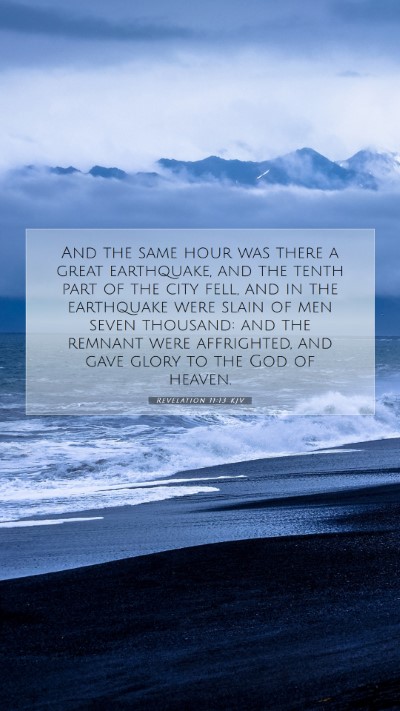Bible Verse Meaning and Commentary on Revelation 11:13
Revelation 11:13 states: "And in that hour there was a great earthquake, and the tenth part of the city fell, and in the earthquake were slain of men seven thousand: and the remnant were affrighted, and gave glory to the God of heaven." This verse unfolds layers of meaning and implications for the reader, revealing the dramatic spiritual and physical realities presented in the Book of Revelation.
Overview of Revelation 11:13
This passage depicts a celestial event marked by a great earthquake, indicative of divine judgment. The death toll of seven thousand men is noteworthy, drawing attention to both the severity of the judgment and the remnant that remains. The remnant, despite their fright, ultimately acknowledges the sovereignty and glory of God.
Insights from Public Domain Commentaries
-
Matthew Henry's Commentary:
Henry emphasizes the significance of the earthquake as a symbol of God's intervention in human history. He points out that the city's collapse signifies the downfall of corrupt systems opposed to divine authority. The number of deaths, seven thousand, he notes, may represent a completion of judgment, echoing the biblical principle of divine order. Importantly, the remnant’s response to give glory to God illustrates a turning point where even amidst destruction, there is an acknowledgment of God's dominion.
-
Albert Barnes' Notes:
Barnes highlights that the "tenth part of the city" falling suggests a fraction of what was once regarded as strong or significant, indicating the vulnerability of human enterprises against divine power. He interprets the earthquake as both a literal and figurative event, one that shakes the foundations of worldly systems and intrigues. The reaction of the remnant is also crucial as it signifies a moment of repentance and divine recognition, demonstrating that God's purpose always involves a remnant who honor Him.
-
Adam Clarke's Commentary:
Clarke focuses on the imagery of the great earthquake, relating it to prophetic literature that often uses natural disasters to convey divine messages. He posits that the seven thousand may correlate with the ancient concept of completeness and serves as an illustration of God's justice. The frightened remnant that gives glory to God reflects a reversal where terror turns into worship, highlighting the punitive aspect of divine judgment leading to eventual recognition of God's supremacy.
Understanding the Context and Significance
As we study Revelation 11:13, it is vital to consider the larger narrative of the Book of Revelation, which is filled with symbolism and prophetic imagery. The events leading to this verse underscore the clash between divine authority and worldly rebellion. The remnant’s transformation also serves as a metaphorical message for believers, illustrating that in times of despair, there is always an opportunity for redemption and glorification of God.
Cross References
- Matthew 24:7: Discusses the signs of the end times, including earthquakes.
- Revelation 6:12: Describes a great earthquake accompanying a significant event in the end times.
- Isaiah 24:19-20: Prophetic imagery of the earth shaking under divine judgment.
- Luke 21:11: References signs in the heavens and earth, including earthquakes.
- Revelation 16:18: Another prophecy detailing a great earthquake of unprecedented magnitude.
Application and Reflection
When considering how to apply Revelation 11:13 to our lives today, it becomes clear that this passage carries a dual call to awareness of divine justice and the importance of glorifying God amidst trials. Believers are encouraged to find solace and purpose even in calamity, using these events as reminders of God’s ultimate control over history. In our Bible study groups or personal readings, this passage provokes deep reflection on God's sovereignty and the necessity of faith and acknowledgment of His glory in every circumstance.


